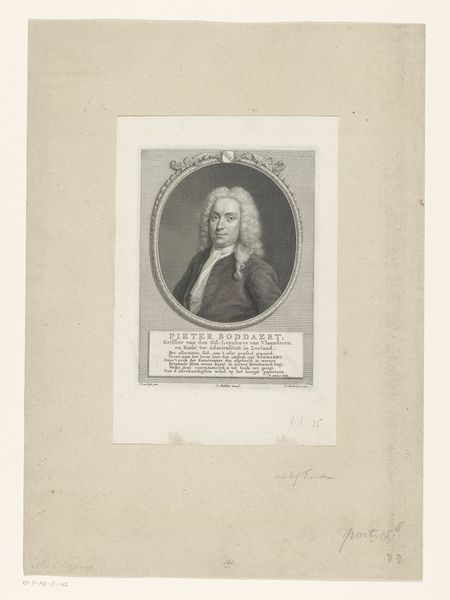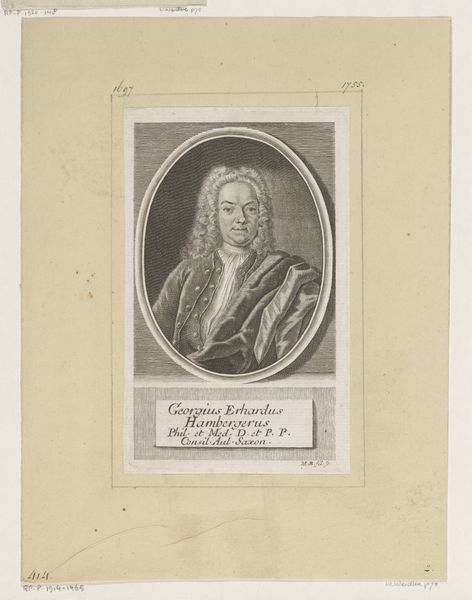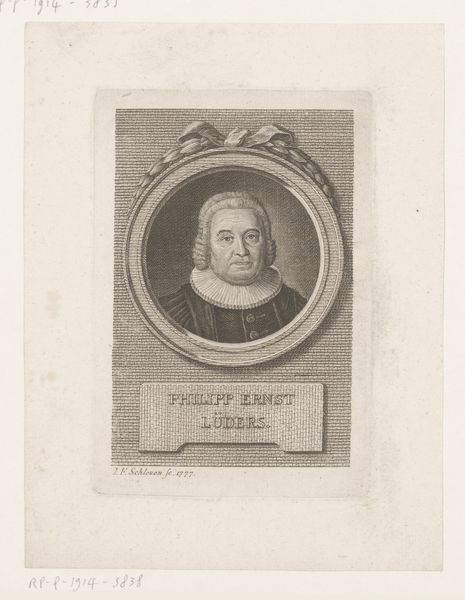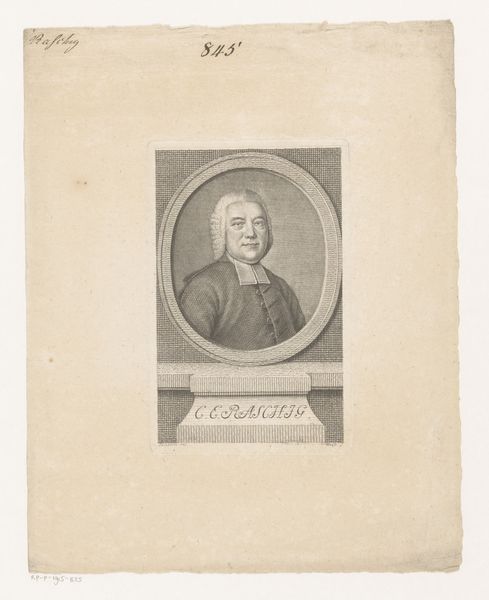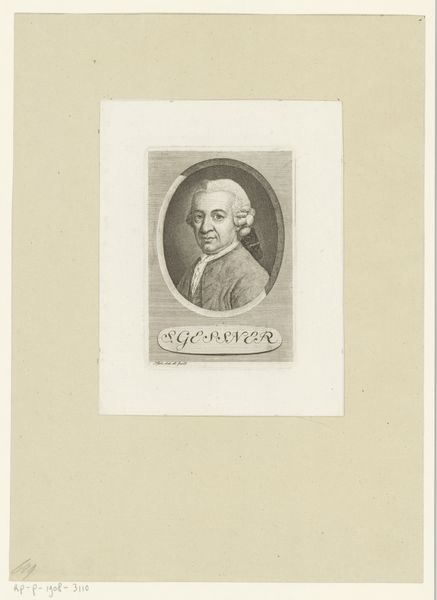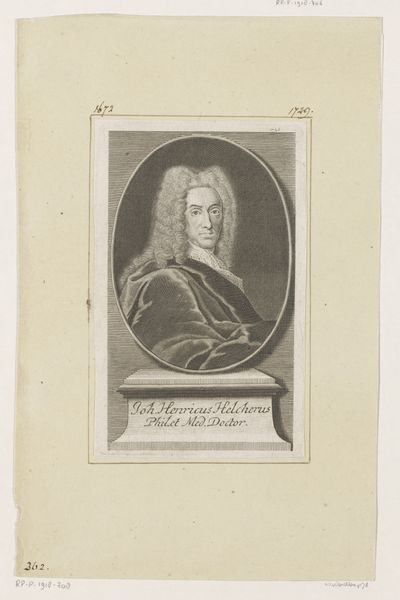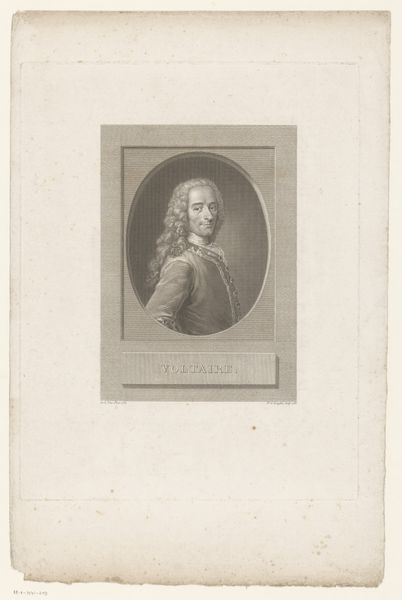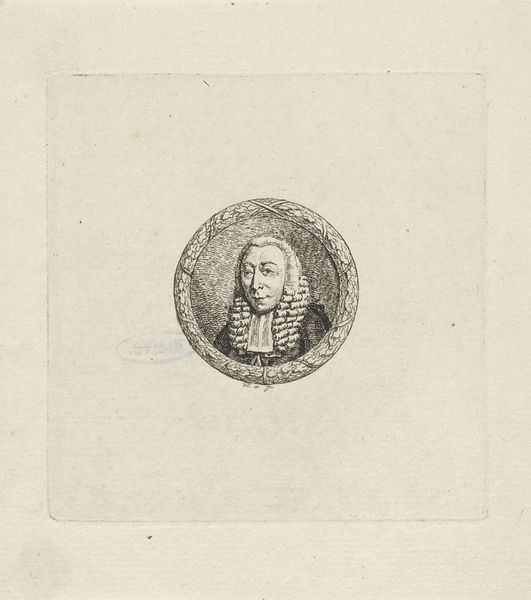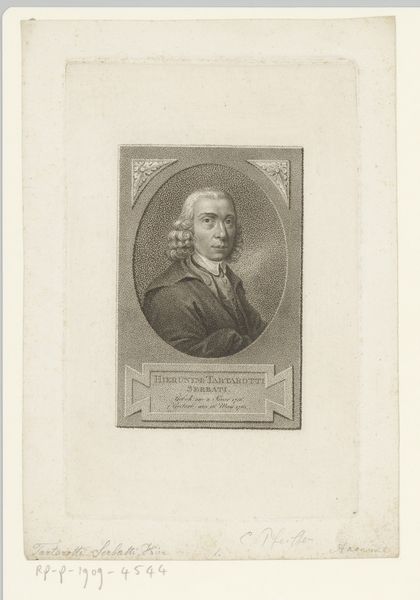
Dimensions: height 127 mm, width 85 mm
Copyright: Rijks Museum: Open Domain
Curator: This print presents a portrait of Jean-Jacques Burlamaqui. The artwork, realized by Heinrich Pfenninger between 1759 and 1815, employs engraving techniques. Editor: There's a gravity in his gaze that contrasts sharply with the frippery of his wig. A very Enlightenment tension, if you ask me. Curator: Indeed. The trappings of the old order, embodied by the Baroque wig, contrast with the subject's intellectual engagement during an era of societal change. The oval frame containing the image feels almost like a lens focusing on his person. Editor: The oval emphasizes that contained intensity. Looking closer, Burlamaqui is presented, and his name is emblazoned right below. It looks like an authoritative statement of identity for this period. I imagine that the symmetry evokes a sense of established order. Curator: Well, the use of portraiture, and prints especially, grew considerably during the Enlightenment alongside the rise of the public sphere. Individuals like Burlamaqui—a theorist of natural and political law—gained renown, and their images became commodities in a burgeoning market of ideas. It reinforces not just his personal identity but his public persona and the status attributed to intellectuals. Editor: These printed portraits are so interesting; to see an intellectual promoted and distributed. How much more did having a certain "look" impact his message at this time? It’s something we don’t really talk about. Curator: Absolutely! Visual rhetoric was a vital tool for self-fashioning. Burlamaqui's serious expression conveys intelligence. And these details, reproduced through engraving, speak to the increasing power of printed imagery in shaping public perception of Enlightenment figures. And prints such as this provided greater and wider distribution of public figures that just was not available prior. Editor: It's intriguing how this image functions, even now, as an artifact that both presents and also interrogates ideas of authority. So glad to have paused here to view it. Curator: Yes, it certainly underscores the relationship between image, identity, and intellectual legacy during a formative period in modern history.
Comments
No comments
Be the first to comment and join the conversation on the ultimate creative platform.
